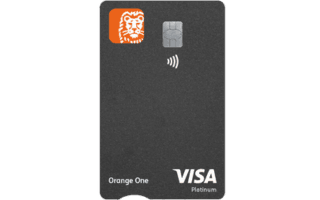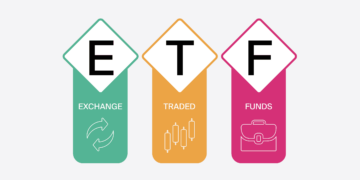What are ETFs and how to invest safely

Exchange-Traded Funds (ETFs) have gained significant traction among investors due to their unique blend of benefits that enhance portfolio management. These investment vehicles function similarly to stocks, trading on exchanges, making them easily accessible to investors. This trading feature means that ETFs can be bought and sold at market prices throughout the trading day, a flexibility that traditional mutual funds do not offer. The growing popularity of ETFs can be attributed largely to their capability to provide a diversified investment option while adhering to cost-efficient strategies that can lead to better long-term growth.
Key Features of ETFs
- Diversification: One of the primary advantages of ETFs is their ability to offer a diversified investment. For instance, an investor can buy a single ETF that encompasses various sectors, such as technology, healthcare, and finance, thereby spreading risk. This diversification becomes critical in managing the inherent volatility of the stock market, especially during economic downturns.
- Liquidity: The stock-like nature of ETFs allows investors to trade them on the exchange at any point during the trading hours. This liquidity means that investors can respond quickly to market changes. For example, in the Australian market, ETFs like the SPDR S&P/ASX 200 Fund (STW) can be easily traded, allowing investors to capitalize on short-term price movements.
- Cost-Effective: ETFs typically have lower expense ratios compared to traditional mutual funds, making them an attractive option for individuals looking to minimize fees. Lower management fees can significantly impact an investor’s overall return, especially over the long term. As investors in Australia navigate their options, the cost efficiency of ETFs can lead to higher net gains.
For both novice and seasoned investors, adopting a strategy for ETF investments is crucial. While ETFs present opportunities, a well-thought-out approach can safeguard investments while enhancing returns. Below are several practical tips for investing safely in ETFs:
Safe Investment Tips
- Research Thoroughly: Understanding the underlying assets of an ETF as well as its historical performance is paramount. Investors should look for details on the fund’s top holdings, sector allocations, and management strategy to ensure alignment with personal investment objectives.
- Consider Market Conditions: Keeping an eye on global and domestic economic trends is essential as these can heavily influence ETF performance. Factors such as interest rates, inflation, and geopolitical events can impact different sectors, thus affecting individual ETF investments directly.
- Set a Budget: Planning how much capital to allocate towards ETFs is critical. Investors should carefully consider their risk tolerance and financial goals, creating a budget that fits their personal circumstances while avoiding overexposure to any single investment.
By adhering to these guidelines and continuously monitoring their portfolios, investors can navigate the dynamic ETF landscape with confidence, making informed decisions that align with their long-term financial aspirations. Ultimately, a strategic approach not only mitigates risks but also enhances the potential for significant returns in an increasingly complex market environment.
CHECK OUT: Click here to explore more
Understanding the Basics of ETFs
Exchange-Traded Funds (ETFs) have revolutionized the way investors approach the financial markets. Fundamentally, ETFs are investment funds that are traded on stock exchanges, mirroring the functions of a traditional stock while offering an assortment of benefits. As passive investment vehicles, they provide an effective means of acquiring a diversified portfolio without the necessity of purchasing individual stocks. This multifaceted investment strategy is particularly appealing to investors aiming to mitigate risks associated with volatility in the market.
ETFs encompass a wide array of asset classes, including equities, bonds, commodities, and real estate. This extensive range illustrates the flexibility that ETFs offer regarding investment options. For instance, in Australia, investors may choose to invest in ETFs that track major indices such as the S&P/ASX 200, providing exposure to the largest companies listed on the Australian Securities Exchange (ASX). This level of exposure not only facilitates diversification but also allows investors to capitalize on the overall performance of the market rather than relying on the success of a single entity.
Key Characteristics of ETFs
- Transparency: ETFs generally disclose their holdings daily, offering investors clarity on the underlying assets. This transparency empowers investors to make well-informed decisions based on current data.
- Tax Efficiency: ETFs typically incur lower capital gains taxes compared to mutual funds. This unique tax structure can contribute to a greater overall return on investment, making them an appealing choice for long-term investors.
- Flexibility in Trading: As ETFs trade on exchanges, they facilitate orders like limit and stop-loss orders, granting investors greater control over their trading strategies. This capability enables investors to respond swiftly to market changes, a crucial advantage in volatile times.
Investing in ETFs is not without risks, and it is imperative for investors to understand these risks before allocating funds. Factors such as market fluctuations, interest rate movements, and changes in economic indicators can impact the performance of ETFs. In light of these risks, it is essential to adopt a cautious and informed strategy for investing in ETFs, ensuring that decisions align with individual financial goals and risk tolerance.
In addition to the previously mentioned tips for safe ETF investment, a comprehensive understanding of market dynamics and a proactive approach to market analysis can significantly bolster an investor’s ability to navigate the complexities of ETFs. By leveraging market research, utilizing analytical tools, and remaining vigilant about economic indicators, investors can better position themselves to capitalize on potential opportunities while safeguarding their investments.
CHECK OUT: Click here to explore more
Strategies for Safe ETF Investing
While Exchange-Traded Funds present numerous opportunities for investors, a well-structured strategy is essential to minimize risk and enhance potential returns. Safe ETF investing demands a comprehensive understanding of various elements that can influence market performance and an astute application of that knowledge.
Diversification and Asset Allocation
One of the foremost strategies is diversification, which involves spreading investments across various asset classes, sectors, and geographical regions. By investing in multiple ETFs that track different indices or sectors, investors can diminish the impact of market volatility on their overall portfolio. For example, an Australian investor may choose to allocate funds into ETFs that represent a mix of local equities, international stocks, and commodities. This broad exposure can help to offset losses in one area by gains in another, thereby enhancing stability.
Asset allocation further refines the diversification strategy by defining the proportion of investments in various asset classes based on individual risk tolerance, financial goals, and time horizon. For instance, younger investors may be inclined to invest a higher percentage in equities through ETFs for growth, whereas those nearing retirement might prefer a conservative mix tilted towards bonds and defensive stocks. Regularly reviewing and adjusting this allocation as market conditions and the investor’s situation change is crucial for maintaining a balanced approach.
Utilizing Dollar-Cost Averaging
Another effective risk management technique is dollar-cost averaging, a strategy that involves regularly investing a fixed amount of money in ETFs, irrespective of market conditions. This method mitigates the risks associated with market timing and emotional decision-making by purchasing more shares when prices are low and fewer when prices are high. For example, an investor may decide to allocate a set sum each month into an ETF tracking the ASX 200, thereby averaging their purchase price over time, which can lead to a potentially lower cost basis in the long run.
Thorough Research and Due Diligence
Investors must also prioritize thorough research and due diligence before selecting ETFs. Evaluating factors such as the fund’s historic performance, expense ratios, and the issuer’s reputation is paramount for making informed decisions. Additionally, an understanding of the ETF’s underlying assets and the index it tracks helps ascertain whether it aligns with an investor’s investment objectives. For example, examining the performance of sector-specific ETFs, such as those covering renewable energy or technology, can provide insights into their potential future performance relative to the broader market.
Monitoring and Rebalancing Your Portfolio
Finally, consistent monitoring and rebalancing of the investment portfolio ensure that the initial asset allocation remains intact and reflects the investor’s changing risk appetite and market conditions. Periodic reviews allow investors to identify underperforming assets and make necessary adjustments by either reinvesting in higher-performing ETFs or diversifying further into emerging sectors. This proactive approach not only safeguards against market downturns but also positions investors to capitalize on upward trends.
In summary, while the investment landscape may be fraught with risks, implementing these strategies can significantly improve an investor’s chances of achieving their financial objectives through Exchange-Traded Funds. It is imperative to approach ETF investing with an informed, methodical framework tailored to individual circumstances and market realities.
SEE ALSO: Click here to read another article
Conclusion
Exchange-Traded Funds (ETFs) have transformed the investment landscape, providing Australians with an accessible and versatile vehicle for wealth accumulation. As a hybrid product that marries the benefits of traditional mutual funds and stocks, ETFs offer investors the unique ability to gain exposure to a diverse range of asset classes and sectors. However, to navigate the complexities of the financial markets successfully, it is crucial to adopt a disciplined approach to investing in these products.
By prioritizing diversification and adhering to a sensible asset allocation strategy, investors can manage risk effectively while enhancing their potential for returns. Incorporating techniques like dollar-cost averaging allows individuals to mitigate emotional biases and build a more robust portfolio over time. Furthermore, conducting thorough research and due diligence on potential ETFs and maintaining a practice of consistent monitoring and rebalancing can enable investors to stay aligned with their financial goals.
Ultimately, achieving success in ETF investing requires an informed and proactive stance. By remaining vigilant and adaptive to market dynamics while leveraging well-thought-out strategies, Australian investors can incorporate ETFs into their portfolios with confidence and prudence. As you embark on your ETF investment journey, remember that informed decision-making will not only safeguard your investments but also pave the way for long-term financial prosperity.

Linda Carter is a writer and expert in finance and investments. With extensive experience helping individuals achieve financial stability and make informed decisions, Linda shares her knowledge on the Innovbs platform. Her goal is to provide readers with practical advice and effective strategies to manage their finances and make smart investment choices.






